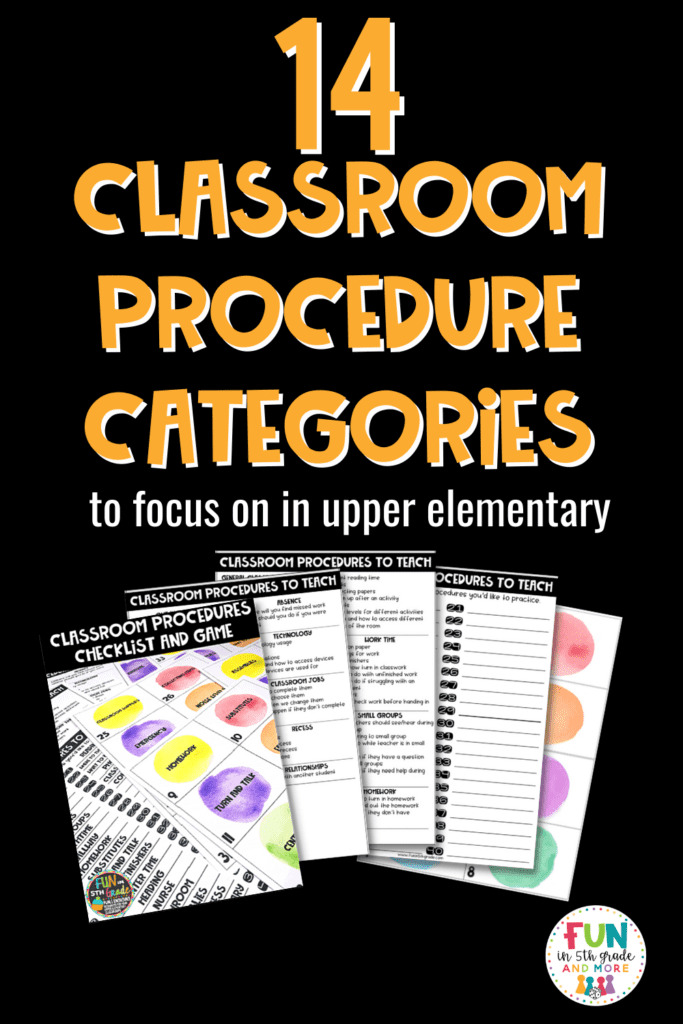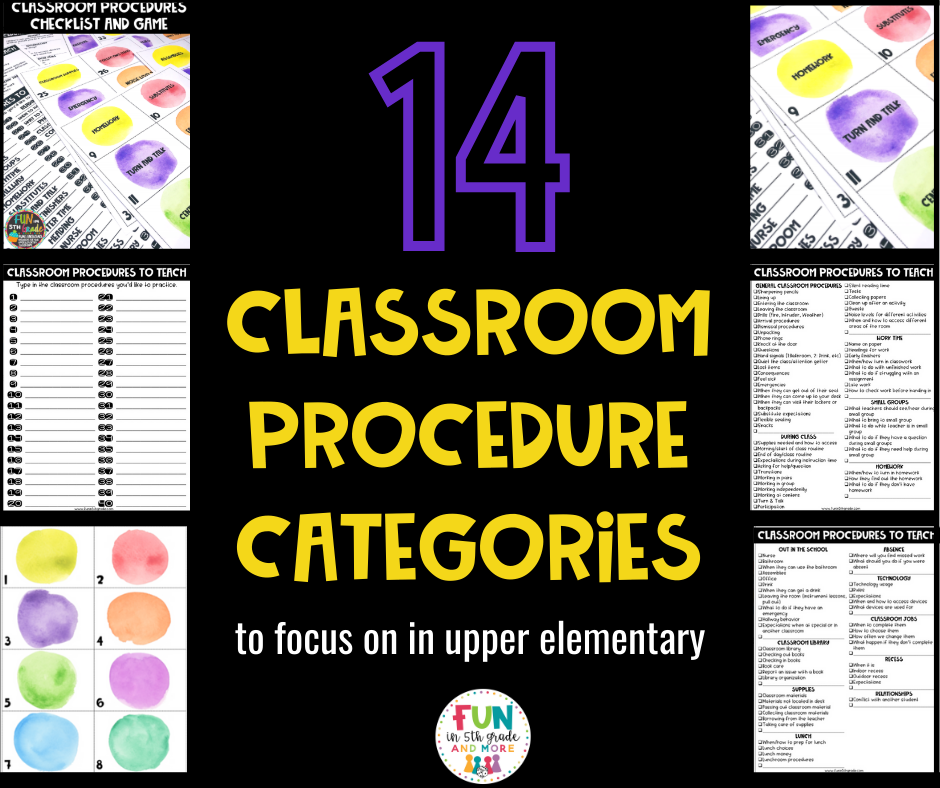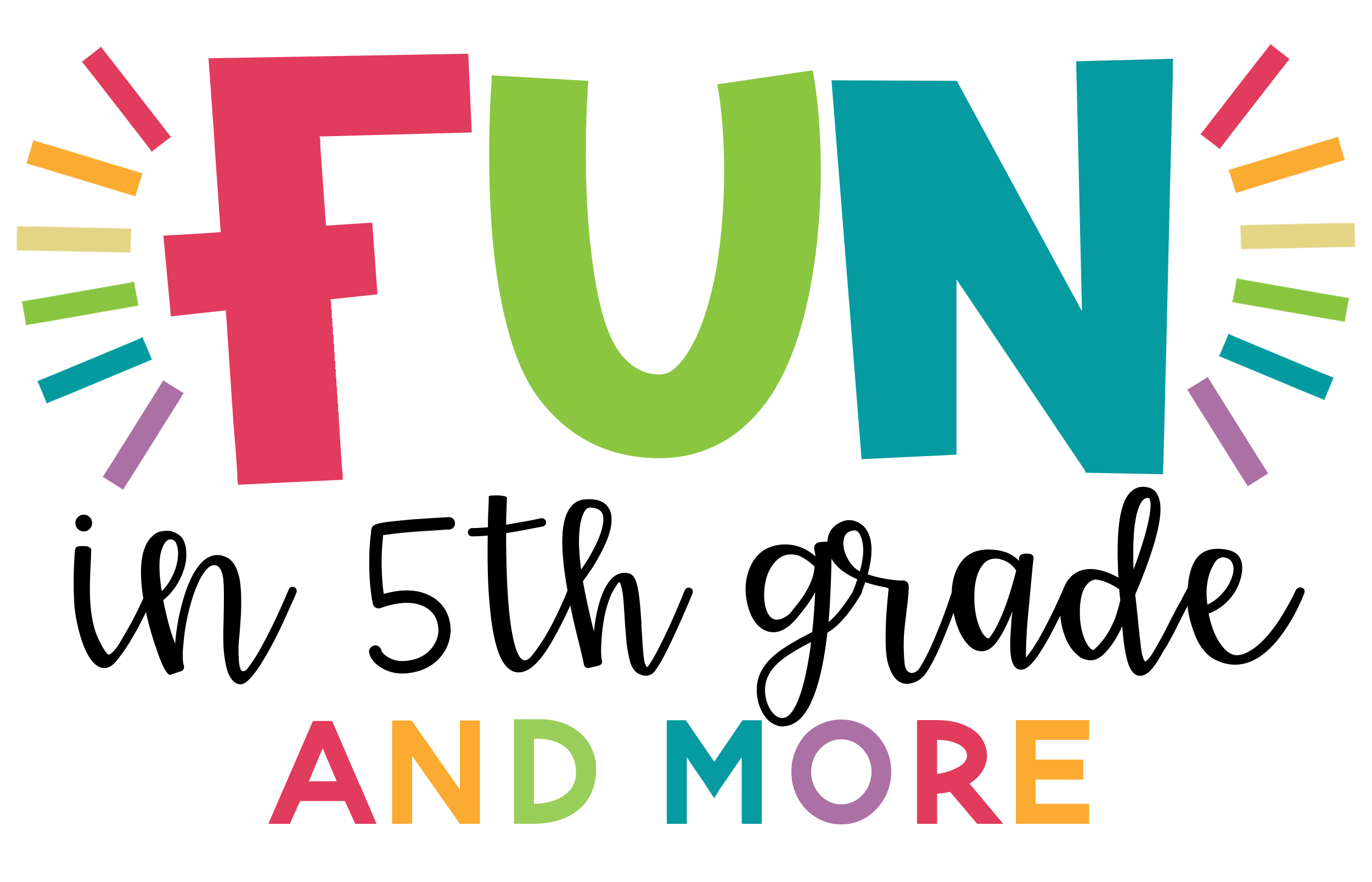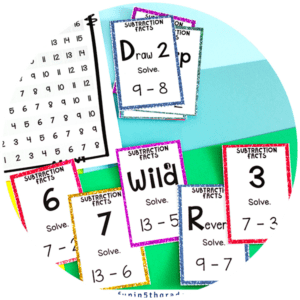As you prepare for back to school, these 14 classroom procedure categories will help you make sure your students feel comfortable in their new environment.

The beginning of the school year is among us, and I’m already looking forward to the traditions that mark the back-to-school season.
First, we have the first day of school outfits. Both students and teachers will be dressed to the nines on those first days of school.
Second, back to school shopping.
Markers, crayons, and pens, oh my!!! Especially after many classrooms went bare bones last year, it is exciting because this year, we get to go back to the drawing boards…or shopping carts in an effort to make our classroom environments homey, colorful, and full of awesome tools to keep our students engaged.
Another tradition that aligns with the beginning of the school year…questions. Back-to-school time is a time of questions and curiosity. Students are walking into an environment they don’t know anything about, and they are trying to understand what this space will mean for them.
All of these traditions are fun and exciting, but no matter how good we’re looking or how much stuff we have in the classroom, it is really how we answer the questions that will make the largest, long-term impact.
The great thing about all of this…these are traditions for a reason. Each of these experiences is one that happens every year, so we know what to expect, and we can prepare appropriately.
So the good news is that we already know what questions our students have, and now we can make sure that we know how to answer their questions and help them feel safe, secure, and comfortable in this new environment where they will be spending so much of their time.
We have considered what questions students may have, and we have realized that many of them have to do with classroom and school procedures. With that in mind, we have narrowed the list into 14 categories that teachers can focus on to meet the needs and questions of their students.
14 classroom procedure categories that will answer your students’ questions
These categories will help you start brainstorming the procedures you’ll need to go over with students. We will review some common questions to consider, but make sure to download the Classroom Procedures to Teach Checklist for all of our ideas on specific procedures to focus on at the beginning of the year.
#1| General Classroom Procedures
Of all the classroom procedure categories on our list of, we have a lot to cover in general classroom procedures. From how and when to sharpen their pencils, what to do if they don’t feel well, and when snacks are allowed, this category focuses on all of the general parts of classroom management that the other categories don’t quite touch on. Make sure to download the full Classroom Procedures to Teach Checklist so you don’t forget any of the important general classroom procedures.
#2| During Class
This category is all about the everyday procedures that go along with classroom routines. For example, what do students do in the morning when they enter the room? How do centers work? What are the expectations for group work? These are the daily routines and interactions students encounter during class and specific lesson blocks throughout the day.
#3| Work Time
As you consider work time, think about how students will be completing work independently. What will help them be most successful as they complete activities and projects and even simple daily work? Where do you want papers turned in? What should a student do if their work is not done on time? What should they do if they are struggling? It is during work time that students can easily become distracted, especially if they are uncertain about the expectations for the assignment or their work. Set them up for success by giving them specific processes for managing this time.
#4| Small Groups
A daily part of my teaching was small group time. This is the time students work in a small group situation with the teacher. Small group time frequently happens while other students are doing centers or other activities, so spending some time setting up the expectations for this time will allow you to focus on getting everyone else set up before shifting your attention to the small group. Some questions you’ll want to answer will be about what to bring to small groups and what appropriate behavior looks like during small groups.
#5| Homework
Depending on the age of your students, homework may be another daily part of your students’ lives. If you have daily homework, you expect students to do, this would be a great time to review that. If your students do nightly reading logs or they are expected to take a homework folder home, go through the procedures and answer questions related to homework-related tasks.
#6| Out in the School
The school is a big place, and depending on the size of your school or school district, your students may be in this school or in this part of the school for the first time. Even if your students have been in this school setting for a while, it is amazing how short our students’ memories are. Take the time to go tour the school. Stop by the nurse’s office, show students their options for restrooms, where they can get a drink, and where they can go if they have an emergency outside the classroom.

#7| Classroom Library
Take some time to talk students through your classroom library. How can students use the library? Can they take books home? If so, for how long? How is the library arranged? What should students do if a book is damaged in their care? Take some time to make sure that students are prepared to enjoy the benefits and responsibilities of the classroom library.
#8| Classroom Supplies
You know all those awesome supplies you purchased during the back-to-school sales, it’s time to make sure that they are shown some love throughout the year. Begin by showing students where the supplies can be found and how they can borrow them from the teacher. Are your supplies a free-for-all or do they need to be checked out? Make sure all of these questions, plus the other ones on the classroom procedure checklist, are answered during your classroom procedures talk at the beginning of the year.
#9| Lunch
Yay! Lunch! Students will be excited about spending a little quality time chowing down with their friends, but how will they know who they will sit by or how they will know what their choices are? Take the time to make sure students are never wondering where they can find their food or what to do if they bring their own lunches. Consider taking a trip to the cafeteria and giving students some time to pick out where they will sit. Maybe find a way to play a game in the space to help students feel more comfortable with their options.
#10| Absences/Attendance
Unfortunately, our students will not make it to class every day, but we don’t want them to be concerned about missing out or be a distraction when they get back. How can you help make their transition back after an absence smooth? One of the best things to come out of the 2020-2021 school year is that our students’ options when they miss school may have changed. Now, some students will have the opportunity to participate in class via Zoom or stream a class lesson at home. These first couple weeks of school are a great time to have all of the ‘what if’ conversations surrounding absences and attendance.
#11| Technology
Technology has never been more prominent in classrooms, and that makes this next conversation really important. Students will need some firm guidance and rules relating to classroom technology. Make sure to spend time on all the different types of technology available to your students, and if your students are allowed to take tech home, you’ll want to go through expectations for in-class technology and home-based technology.
#12| Classroom Jobs
Let’s help our students build their work ethic with some classroom jobs and tasks. Most classes have some classroom routines that teachers will need help from students to complete each day or week. Go through each of the classroom jobs that students will complete, work through how the job is to be done, how often each student will do it, and what happens if the job doesn’t get done.
#13| Recess
Recess can feel a little chaotic to people walking by on the sidewalk or driving by in their cars, but teachers know that it only looks messy. A safe, fun recess, like all other parts of a students’ day, is taught through procedures and expectations. Make sure that students understand what the expectations are for recess, and don’t forget that recess spaces sometimes change. How do the expectations and procedures change if students are indoors or outdoors? Keep in mind all the variances of this time. During recess, students have a variety of activities to choose from, other students to play with, and a lot more freedom than during classroom activities, so make sure that you are on the same page as other teachers whose students will be sharing recess time with your students.
#14| Relationships
Last but not least, we need to talk about the relational procedures that happen during school. Consider the different situations students may find themselves in as they interact with other students. Talk to students about what to do if they find themselves in a conflict with other students. Do different types of problems warrant different types of procedures? Consider some of the issues students have had over the years and allow students to submit their own examples of things that may come up so you can talk through how to deal with them.
If you sit down and focus on each of these 14 categories, you will have a really solid list of procedures to go over with your students. Take some time to reflect on each category. Make a list of what types of questions your students may have.
We also have a Classroom Procedures Game Show that you can use either to introduce your classroom procedures or review them. The Classroom Procedures Game Show is great for back-to-school time, but it also serves teachers well after long breaks, at the beginning of the new semester, or even when helping a new student get acquainted with your classroom.
If you are a teacher who likes to instill some independence in your students from day one, check out this post for some ideas for going over procedures with students.





